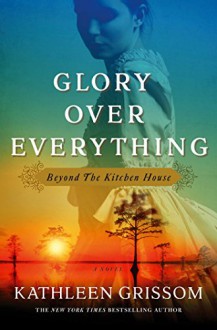
The initial pages of Dickerson’s novel offer the reader a promising beginning, immersing the reader into a story brimming with mystery and espionage. Unfortunately this promise is short lived due to the plot’s shift in focus from mystery to romance. As a result of this shift, many plot lines that are initially introduced are suddenly dropped or are hastily concluded because of the emphasis on various relationship pairings that occur throughout the rest of the novel. As the novel concludes, the reader is left with many questions that are left unanswered. For example, the origins and source of Edgerton and Wilhern’s friendship, the source of Mr. and Mrs. Wilhern’s abhorrence and resentment of Julia, the fate of Garrison Greenfield, the plausibility of a twenty-four year old Eton College student, etc. A discerning reader could potentially speculate the answers based upon the crumbs of information offered. However the fact such prominent storylines are seemingly dropped for no significant reason, leads the reader to question, “How could this have happened?”
Forgiving readers could potentially overlook these plot inconsistencies if the story’s main characters could garner the reader’s sympathetic interest. In Dickerson’s novel this is not so simple, since the dialogue can have a negative impact on the reader’s first impressions of the story’s main characters. At the outset, Julia is seemingly portrayed as an intelligent, resolute and independent young woman, especially when paired with her sensitive, frivolous, and simpering cousin Phoebe. However once Julia speaks, it is immediately apparent that her conversation lacks substance and maturity, an understanding that is made further apparent by the cloying, effervescent wording of her first letter to Nicholas. As one scene builds upon the next, the distinction between Julia and Phoebe is not as clearly defined by the novel’s end.
Upon reflection, the other characters in this story don’t fair much better either. All of the characters’ emotional development is hindered by the romance plot, including the fallen woman story. The progression of the romance plot does a major disservice to this particular storyline. Instead of being depicted as someone who is taken advantage of due to her lonely state, the fallen woman is portrayed as being fickle in her relationship attachments, and thereby lacks sound character judgement. Her correspondence only corroborates this interpretation of her story, since she readily confesses that her romantic attachments were based upon the superficial “love at first sight.”
Initial impressions of the novel could seemingly lead the reader to identify A Spy’s Devotion as a satire of the romance genre. However I do not believe this was the author’s true intent. I don’t think the novel will positively engage a discerning reader; such readers would fair better with reading Georgette Heyer’s regency romance/mystery novels. Readers pursuing other novels by Dickerson would probably fair better by sticking with her fairytale retellings.
Copy provided by NetGalley


 Log in with Facebook
Log in with Facebook 













